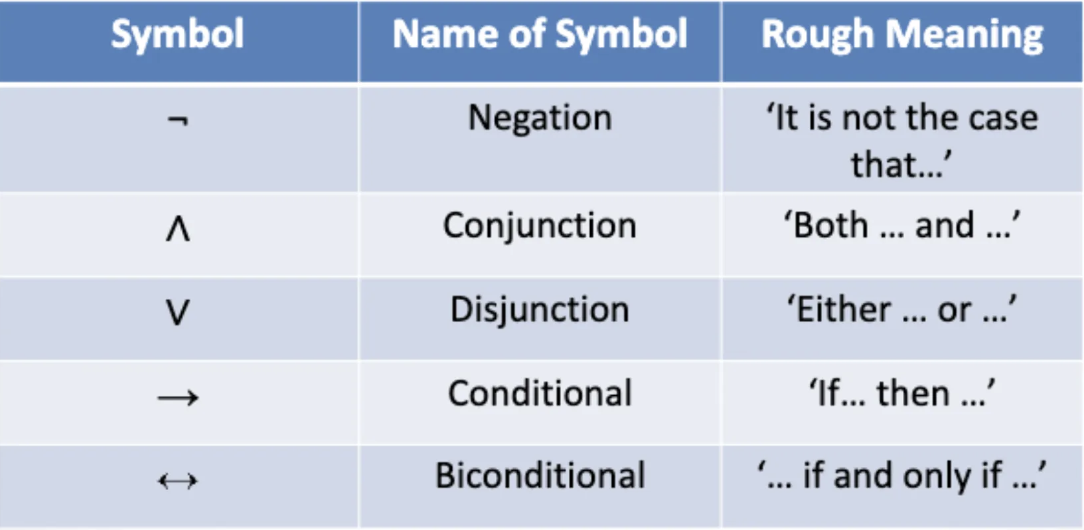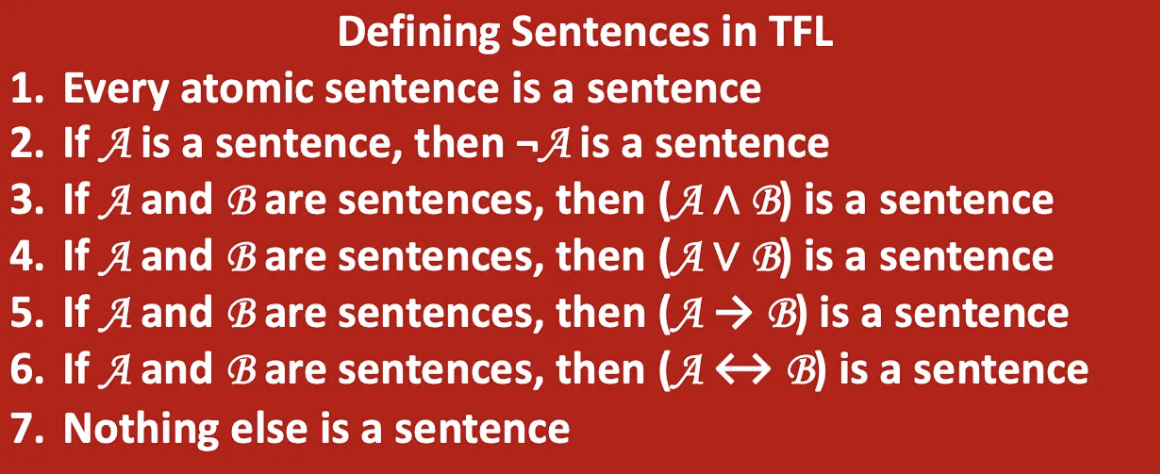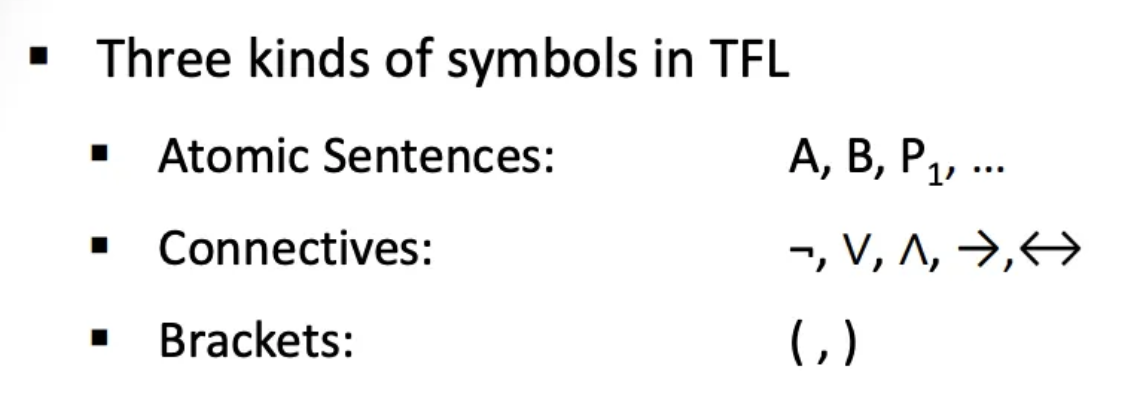Module 2: Truth-Functional Logic
1/21
There's no tags or description
Looks like no tags are added yet.
Name | Mastery | Learn | Test | Matching | Spaced |
|---|
No study sessions yet.
22 Terms
Symbolizing: Have at least one

Symbolizing: IF a THEN b
( A → B )
Symbolizing: a ONLY IF b
( A → B )
*the antecedent is the thing BEFORE the only if
Symbolizing: a IF b
( B → A )
*if by itself in the middle: antecedent is AFTER the if
Symbolizing: a IF AND ONLY IF b
( A ←→ B )
*biconditional
Are there any sentences of TFL that contain no atomic sentences?
No because atomic sentences are the building blocks of sentences and without them, there would exist no "parts" with which a sentence could be "built". More complicated sentences are built up out of less complicated sentences.
Exclusive or ****REVIEW

What are the Building Blocks of TFL Grammar?
Atomic sentences
Basic building blocks out of which all other (more complex) sentences are built
Can stand alone or be sub-sentences in more complex sentences
Symbolized in TFL with capital letters, potentially with subscripts
NEVER translating into TFL —> meaning is not transcribed
Connectives
These allow us to form new, complex sentences out of old ones
These can be atomic sentences or other complex sentences

Exclusive and Inclusive or ***need this?
Exclusive Or:
excludes possibility that both disjuncts are true
Inclusive Or:
allows for both disjuncts to be true
∨ always symbolizes the inclusive or! —> only express exclusive or if the sentence explicitly says so
Use vs Mention
When we want to talk about Nathan, we use his name
When we want to talk about his name, we mention his name (“Nathan” → quotation marks)

When can a sentence be symbolized as ¬A?
A sentence can be symbolized as ¬A if it can be paraphrased in English as ‘It is the not the case that …’
When can a sentence be symbolized as (A ∧ B)?
A sentence can be symbolized as (A ∧ B) if it can be paraphrased in English as ‘Both … and …’, ‘… but …’, or as ‘although …, ….’
What is something important about UNLESS?
*treat UNLESS as OR
If a sentence can be paraphrased as ‘Unless A, B,’ then it can be symbolised as (A ∨ B).
When can a sentence be symbolized as (A ∨ B)?
A sentence can be symbolized as (A ∨ B) if it can be paraphrased in English as ‘Either…, or …’
When can a sentence be symbolized as (A → B)?
A sentence can be symbolized as (A → B) if it can be paraphrased in English as ‘If A, then B’ or ‘A only if B’
When can a sentence be symbolized as (A ←→ B)?

What’s important about ‘A’?

What are the only 2 ways an expression counts as a sentence of TFL?
Individual atomic sentences
Further sentences formed out of them using connectives
This is a recursive definition – begins with specific base elements (ex. atomic atoms), then details ways to generate infinitely many more elements by compounding previously established ones
Allows us to decompose sentences too – if we get to atomic sentences, then our initial expression was a sentence!
find the connective that was added last until you get all the way to the atoms —> shows it’s a sentence
Recursive structure of TFL sentences means we can also define what we mean by the scope of a connective

Sentences of TFL

How do you find the main logical operator of a sentence?
***dont pay attention to the negation symbols

What is the scope of a connective?
The SCOPE of a connective (in a sentence) is the subsentence for which that connective is the main logical operator
Brackets are indispensable – they make it clear what are the ‘units’ of a complex sentence
¬ R → P ∨ ¬ X ∧ Q
shows an expression, but not a sentence